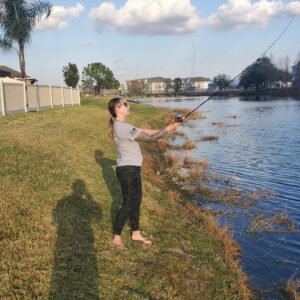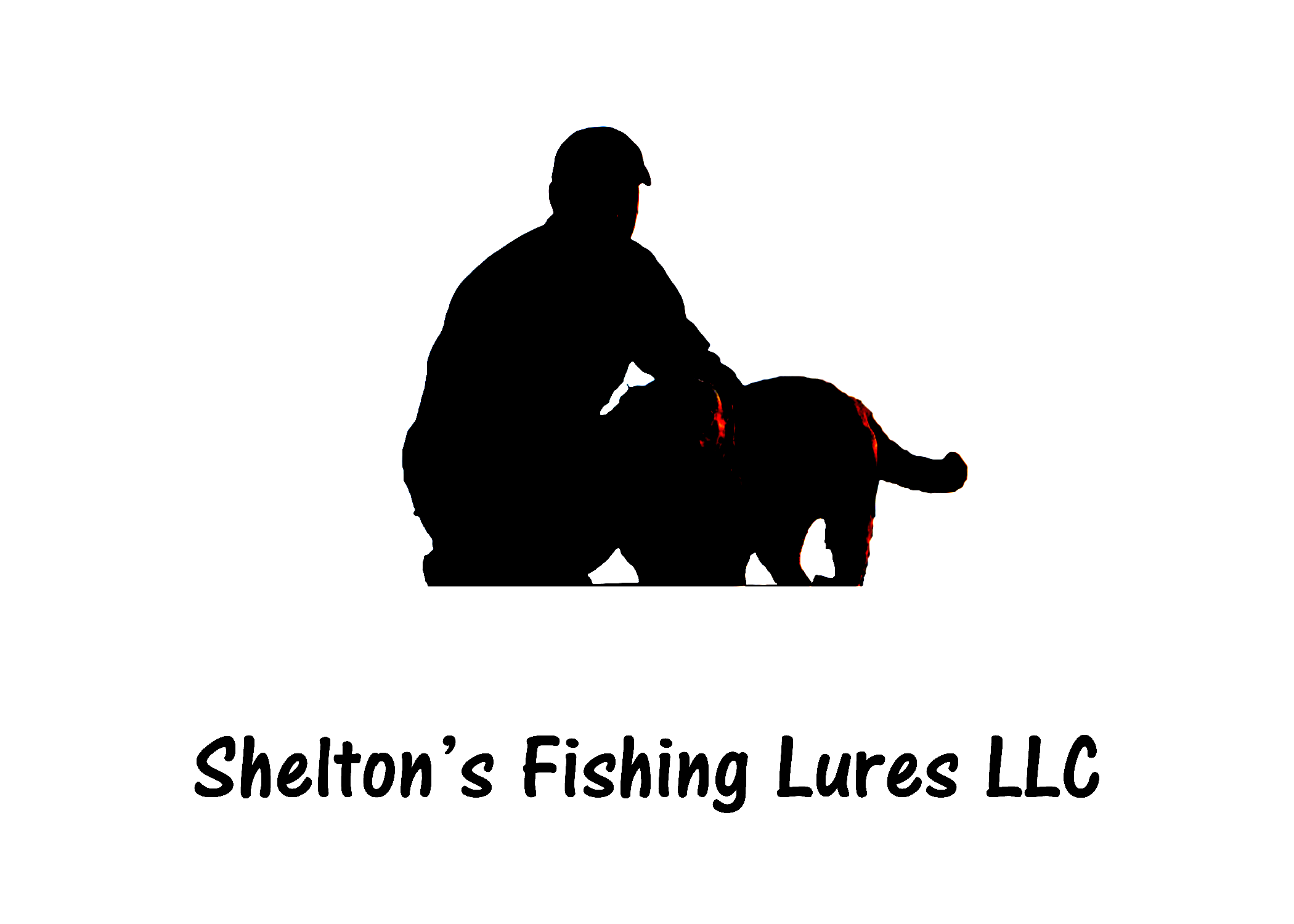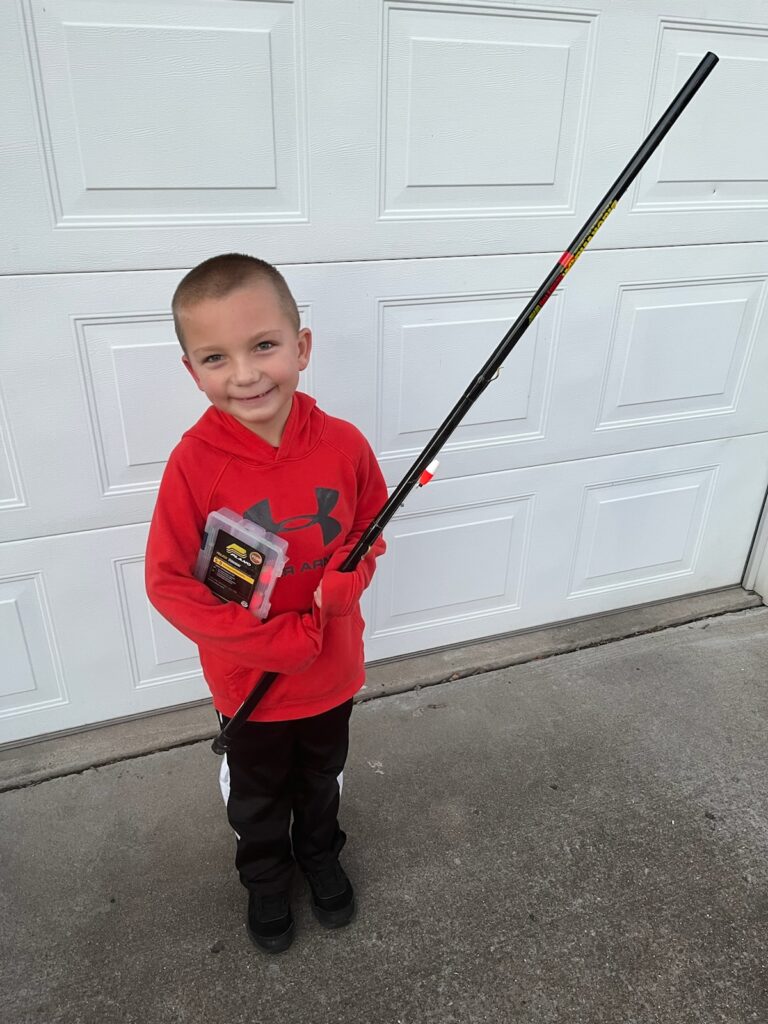Bluegill
Pan Fishing With A Cane Pole Vs. Rod & Reel
Please note that some of my articles contain pictures of the products that I write about. By clicking on them you will be redirected to my affiliate links where you can purchase the reviewed product. I typically get a small commission off any purchases which helps keep my site growing!
“I Truly Believe He Has Caught More Fish From The Bank Than Any Other Citizen In Illinois, With The Majority Coming Off Of a Cane Pole!”
A Beginners Guide To Fishing With A Cane Pole.
I don’t really remember the kind of pole I caught my first fish on, but I do remember us using cane poles way more often than a rod & reel combo. They were really easy to pack along and re rig if something went wrong!
All it took was a package of split shots, small bobber, and hooks that fit perfectly in your pocket, and a cheap spool of line and you could fish all day with no worries.
Walking into some bait shops today, you will still find one sitting off to the side that’s collected dust due to its forgotten past, but please don’t sell them short!
How A Cane Pole Works
Depending on the type you go with (natural vs store bought) cane poles are flimsy but very durable and can handle large fish!
The line is tied in a pattern at the top of the pole ensuring that a fish can’t slip it off forcing you to tie up another rig.
A fisherman using a ten-foot cane pole will usually use a line that hangs at a distance of twelve or so feet which will allow them to reach out of a distance of up to twenty feet once you figure in setting the depth of your bobber at a foot or two.
Also, an experienced pole user will have the technique down so well that they can sneak their bait into a location without the fish noticing and spooking off.
Once a fish takes your bait you simply lift it up directly out of the water with minimal fight!
What Cane Poles Are Made Of
If you’re patient or wanting a DIY project, then making your own cane poles is a fun and rewarding activity. Bamboo or River Cane makes the best poles as their interwoven fibers make for a very flimsy yet durable option.
Some fishermen who chase after huge flathead set up what’s referred to as a “ditty pole” and have no problems withstanding the punishment of a fighting flatty!
Store bought poles on the other hand can be made out of material running from mass produced dried cane on up to fiberglass.
When To Use A Cane Pole
A cane pole is the perfect way for a beginner to fish. It requires little physics knowledge with the technique coming on quickly with repetition. I will demonstrate the techniques used in success.
How To Use A Cane Pole
1.) Hold the pole up high enough with your dominant hand making sure that your hook and line aren’t dragging the ground.
2.) Place the line in your non dominant hand not gripping it tightly but rather holding it in place.
3.) Visualize where your cork/bobber will land, let go of the line, and swing your rig out.
*Hint*
Don’t be surprised or aggravated if you don’t land perfectly where you envisioned the first time. It will only take a little time and you’ll be hitting your target every swing!
A Beginners Guide To A Push Button Rod & Reel
A rod & reel combination is much different.
The rod is smaller than a cane pole, but the reel holds on several more yards of line enabling a fisherman to reach longer distances. little eyelids (guides) are attached to the rod allowing the line to pass through eliminating drag, and helping you control your cast.
Casting a rod & reel is much more difficult because of the extra motions involved but once again, comes with repetition.
If you’re looking at a reel for the first time it looks like a simple contraption but pulling off the covers will reveal a complex maze of parts and gears engineered to do its purpose!
A reel’s drag is one of its best features but yet it’s underutilized by fishermen. The drag’s purpose is to allow the line to slip out at a controlled pace to allow a larger fish time to tire itself out while not putting too much pressure on your line causing it to snap.
It’s quite possible to catch a thirty-five-pound flathead using only eight-pound test line as you’ll see in the picture by knowing how to set your drag!
An important thing to understand about a rod & reel combo is that the weight of your rig is very relevant to the casting distance.
If you were to only use a bobber and hook without a split shot, your cast will not go far and will fly off of trajectory thanks to natural forces like the wind.
However too much weight can cause too far of a cast stripping all of your line out causing it to sever or do damage to the innerworkings because of the recoil!
The Proper Way To Cast A Push Button Rod.
1.) Make certain there is enough line on your reel by opening up the screw on cover from where your line runs into the reel.
2.) Once you’ve determined you have adequate line, screw the cover back on.
3.) Allow four to six inches of distance between the tip of your rod to the top of your rig (whether you have a bobber or not)
4.) Face and visualize your target while raising the rod up so that it points at a one o’clock degree depressing and holding the button down.

5.) Whip the rod toward the ten o’clock position releasing the button as soon as your rod gets directly overhead (This will take several attempts to get right so don’t worry!)


When To Choose A Pole Over A Rod & Reel
Even though you’re giving up distance, there are times where a pole works much better than a reel! Take my grandpa for example, I truly believe he has caught more fish from the bank than any other citizen in Illinois, with the majority coming off of a cane pole!
Cane poles allow stealth when entering the water which is really important for shallow water fishing (1-4ft). A rod & reel has too much force working behind it and when your rig enters the water the splash created can send fish scattering.
A pole also has a stealth advantage of lifting fish directly up out of the water as well. Whatever line is on your pole is all the fish can take and will force them vertically out of the water, thus not disturbing a school
Poles are always cheaper as well; in case you’re just dipping your toes into fishing for the first time!
When To Choose A Rod & Reel Over A Pole
Rod & Reels allow for long distance casts which means you can reach fish up to fifty yards away from you, thus making your more efficient at covering water. They also have much more line in case you hook that big catfish that must be played a little longer!
If you’re chasing larger fish, it’s best to use a rod & reel and learn how to use its “drag” feature.
The simplest way to know how much drag you’ll need is after you’ve hooked that big fish, loosen it up (reels have different ways of doing this so you’ll have to check it before you use it) If when the fish pauses or shows signs of weakening but you can’t reel than your drag is too loose, so start tightening! You can always loosen it back up if the fish gets its second wind!
Conclusion
A cane pole and a rod & reel both have their time and place in fisherman’s hands. I’ve discussed the major factors to consider before you purchase one or the other. If you plan to fish for a long time to come, it’s a good idea to have at least one of each! When taking a child for the first time my choice is pole! 😉







